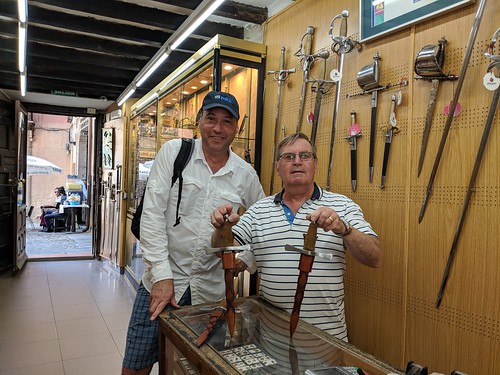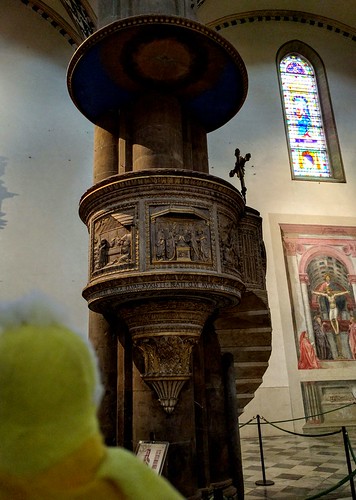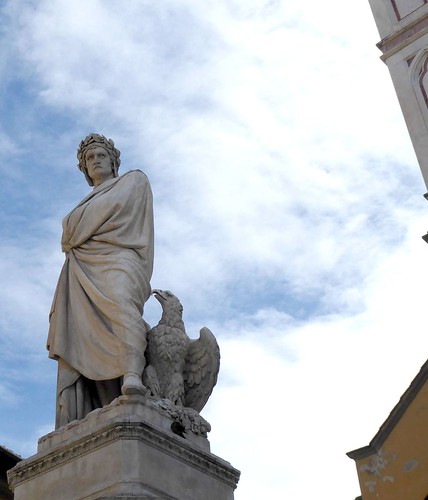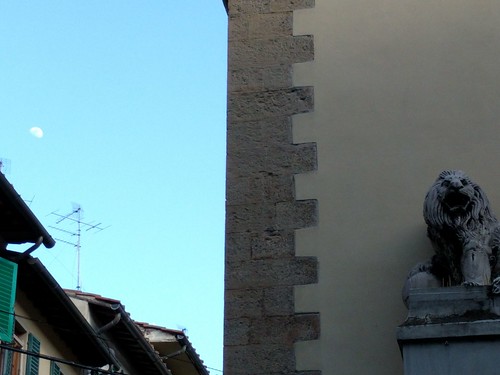I'm writing this from Granada (Spain) and can see the Alhambra (castle complex) from where I'm sitting. Like nearly all the historic sites in Europe, it was built, rebuilt, deconstructed, reconstructed, destroyed, remodeled, updated and expanded upon for centuries, then abandoned.
The Moors ruled from the Alhambra for 500 years and Spanish kings another several centuries after that but the site itself is much older, dating back to Roman times. It's the Moorish influence I find most interesting. Today it's a tourist trap that is, yes, worth seeing anyway.
Showing posts with label UNESCO World Heritage Sites. Show all posts
Showing posts with label UNESCO World Heritage Sites. Show all posts
01/12/2019
26/11/2018
The old man in Évora
Évora, Portugal
One of the last things we did before leaving Portugal was visit Évora, a city that's been continuously occupied for more than 5,000 years. Neolithic tribes, Celts, Romans, Visigoths, and Moors all passed through Évora, some staying centuries before being swept away by war or the changing of the age. You might think with all the different rulers, cultures, identities, and religions that have come and gone, and Évora's 15th century Golden Age being long past, it would be an empty husk but no. Évora today is considered one of the most livable places in Portugal and, because it maintains the integrity of the past within its historic center, it is also listed as a UNESCO World Heritage Site.
We got there early and spent the day doing our usual slow crawl, me photographing everything—medieval byways, the cathedral, paintings, gargoyles, bell towers, most of the 5000 skeletons in the Capela dos Ossos (Bone Chapel), Roman ruins, and random other details along the way. We found a friendly vegetarian restaurant for lunch and at twilight, under a waxing moon, sat on a bench in the town square to people watch while waiting for our train. Just after dark, an elderly gentleman wearing a dark topcoat and carrying an umbrella hooked over his arm emerged from a covered walkway along the square's edge. At our bench, he stopped, turned and, with a pleasant smile, bowed slightly looking back and forth into our eyes then slowly, and very deliberately, wished us boa noite and smiled when we wished him boa noite in return. Then, still smiling, he nodded, turned and slowly moved on. This, above all, is what I will remember of Évora.
 | |
| "Where are you going in such a hurry traveler" Capela dos Ossos |
 |
| Swami & Juan Carlos Évora town square under the waxing moon |
Labels:
EU,
note to self,
Portugal,
travel notes,
UNESCO World Heritage Sites
06/09/2018
Edinburgh - Queens and Guillotines
We're in Edinburgh for the week. Small as it is, this city holds some important pieces of the puzzle like Mary, Queen of Scots who ruled Scotland from 1542 to 1567.
Standing in her private supper chamber in the tower of the Palace of Holyroodhouse, Mary and her tragic reign became disturbingly real. One March evening in 1566 she was dining there with friends including David Rizzio, her private secretary, when her husband Lord Darnley suddenly entered the room, sat beside her and slipped his arm around her back. Then Lord Ruthven, dressed in full armor, entered and announced to the Queen that Rizzio had offended her honor and should come with him. Understanding the situation, Mary ordered Lord Ruthven to leave. The rest, as they say, is history. A screaming Rizzio was dragged into the larger adjoining chamber, stabbed 56 times and tossed down the stairs. His body was buried soon after in an unmarked grave.

By William Allan - Guildhall Art Gallery, Public Domain, Link
Knowing she was the real target of the conspiracy, the Queen skillfully persuaded 21-year-old Darnley to abandon his alliance with the Lords. To insure succession of the monarchy to her unborn child, she needed him at the birth to confirm the child was his. Two days after Rizzio's murder, they escaped the palace together through an underground passage. Nine days later, Mary re-entered the city accompanied by three to five thousand troops and moved into the fortress of Edinburgh Castle to prepare for the birth of her son. Her enemies fled to England, everyone that is, but Lord Darnley. He stayed in Edinburgh and, over the next few months, seemed close to reconciling with Mary but many cross-currents moved below the surface. Eleven months after Rizzio's murder, the lodge where he was staying exploded. Darnley didn't die in the explosion. He and his valet were found dead in the orchard. Both appeared to have been strangled to death. Two and a half months after Darnley's death the Queen married the Earl of Bothwell, the man accused and acquitted of Darnley's murder. However, the intrigue and power games did not end there. A year later the Queen was forced to abdicate her throne to her infant son and flee to England where she remained prisoner of her cousin Queen Elizabeth I until her beheading 20 years later.
The National Museum of Scotland held another crossroads of dusty history and bloody reality for it was there we met The Maiden, Edinburgh's guillotine. We were strolling around, looking at medieval and renaissance artifacts . . . armor, swords, coin hoards, skeletons, carvings and the like when we came upon The Maiden. It stood apart from the rest of the collection like a forlorn and naked wraith trapped in the light of day. It was real like nothing else in the museum and so terribly out time and place. Looking up at it I felt like I was being sucked into a treacherous undertow. But back to the history part.
 |
| The Maiden |
More than 150 people were publicly executed on The Maiden between 1564 and 1710. It even played a part in the drama surrounding Mary, Queen of Scots. James Douglas, the 4th Earl of Morton, the man who introduced the guillotine to the city, was (falsely?) convicted of participating in Lord Darnley's murder. Of course he denied it all, "art and part", but was executed anyway on 2 June 1581. Such is the way when leaders enjoy absolute, unchecked power. Douglas's corpse remained on the scaffold until being buried the next day in an unmarked grave. His head however, as a lesson for all, remained on a spike outside St Giles Cathedral for eighteen months.
Holyroodhouse is the official residence of the British monarchs in Scotland and, by tradition, Queen Elizabeth II spends one week there every year in the spring.
Labels:
art notes,
EU,
museum crawl,
Scotland,
travel notes,
UK,
UNESCO World Heritage Sites
09/08/2018
Toledo for daggers
We're now launched on a 5.5 month stay in Europe. For the first three weeks my daughter and her family will be with us. Last week we stayed at an airbnb in Madrid. From there are three World Heritage sites within an hour of the city by train so it's an excellent base. Never mind the temperature hovered around 105° the entire time, the hottest in the city's recorded history, we visited a thousand year-old castle, 800 year-old cathedrals, 2000 year-old Roman walls, roads, and shrines stuffed with saints bones and the skulls of long dead Catholic Cardinals however, the big event was visiting Fabrica Zamorano, the shop of Mariano Zamorano, master sword smith of Toledo.
Now we're in good old London where it's about 40° cooler and raining.
 |
| For just under $1000, Clark bought four daggers, gifts for his two daughters, his wife, and one for himself. |
Now we're in good old London where it's about 40° cooler and raining.
Labels:
EU,
itinerary,
London,
Madrid,
Spain,
travel notes,
UK,
UNESCO World Heritage Sites
03/05/2016
Make haste slowly
Florence, Italy
Lee describes the historic center of Florence, birthplace of the Renaissance, as a world suspended in amber. It's a perfect description. In 14th century Florence, the merger of Church and secular wealth, power, ruthlessness and creative energy became a flash point transforming western civilization. The Florence of today is the standing record of that fusion suspended in time for all to see.
We stayed in Florence for two weeks, exploring treasures from both the Renaissance and Medieval periods. The city is full of world famous paintings, sculpture and architecture by men such as Brunelleschi, the oldest of the the founding fathers of the Renaissance, Leonardo da Vinci, Raphael, Donatello, Titian, Michelangelo, Botticelli and others. Lisa del Giocondo, the woman Michelangelo painted as the Mona Lisa, lived and is buried in Florence.
Galileo and Michelangelo are also buried there. Dante, however, is not buried there. In 1302 he found himself on the wrong side of a political conflict involving the Pope and in 1315, refusing to pay the fine, was condemned to permanent exile from his beloved Florence or be burned at the stake. In 2008 the city council of Florence passed a motion rescinding his death sentence but thus far the city of Ravenna refuses to give back his bones.
Otherwise, Florence claims many honors. According to wikitravel, Florentines reinvented money, the gold florin which became the engine that drove Europe out of the "Dark Ages". Florentine bankers also financed the first route around Africa to India and the Far East. The Americas were named after a Florentine, Amerigo Vespucci. Florentines also pioneered the use of the vernacular, thus ending the use of Latin as the common language. They invented opera and Ferdinando de' Medici made possible the invention of the piano through his patronage of Bartolomeo Cristofori, a harpsichord builder from Padua.
As for me, the unfinished sculptures Michelangelo were especially powerful, his abandoned figures half-released from the stone. Initially I assumed the unfinished pieces, the rough work, were done by assistants but, when I mentioned this to Lee, he said Michelangelo did most of the work himself, frequently working through the night and, when he did rest, often slept in his boots and clothes. That impressed me and so I read up on him. His biographer Paolo Giovio wrote that "Michelangelo's nature was so rough and uncouth that his domestic habits were incredibly squalid, and deprived posterity of any pupils who might have followed him." Various biographers describe him as solitary and melancholy although he did love one man, Tommaso dei Cavalieri
 |
| Florence, Italy |
Lee describes the historic center of Florence, birthplace of the Renaissance, as a world suspended in amber. It's a perfect description. In 14th century Florence, the merger of Church and secular wealth, power, ruthlessness and creative energy became a flash point transforming western civilization. The Florence of today is the standing record of that fusion suspended in time for all to see.
 |
| Reliquary belonging to House of Medici Florence, Italy |
We stayed in Florence for two weeks, exploring treasures from both the Renaissance and Medieval periods. The city is full of world famous paintings, sculpture and architecture by men such as Brunelleschi, the oldest of the the founding fathers of the Renaissance, Leonardo da Vinci, Raphael, Donatello, Titian, Michelangelo, Botticelli and others. Lisa del Giocondo, the woman Michelangelo painted as the Mona Lisa, lived and is buried in Florence.
 |
| Galileo was first denounced from this pulpit, an event which culminated in him being tried for heresy during the Inquisition. Florence |
Galileo and Michelangelo are also buried there. Dante, however, is not buried there. In 1302 he found himself on the wrong side of a political conflict involving the Pope and in 1315, refusing to pay the fine, was condemned to permanent exile from his beloved Florence or be burned at the stake. In 2008 the city council of Florence passed a motion rescinding his death sentence but thus far the city of Ravenna refuses to give back his bones.
 |
| Dante and eagle outside the Duomo Florence |
Otherwise, Florence claims many honors. According to wikitravel, Florentines reinvented money, the gold florin which became the engine that drove Europe out of the "Dark Ages". Florentine bankers also financed the first route around Africa to India and the Far East. The Americas were named after a Florentine, Amerigo Vespucci. Florentines also pioneered the use of the vernacular, thus ending the use of Latin as the common language. They invented opera and Ferdinando de' Medici made possible the invention of the piano through his patronage of Bartolomeo Cristofori, a harpsichord builder from Padua.
 |
| When Michelangelo was an apprentice a rival punched him in the nose "mashing it like a biscuit". It remained that way the rest of his life. Bargello Museum - Florence Italy |
As for me, the unfinished sculptures Michelangelo were especially powerful, his abandoned figures half-released from the stone. Initially I assumed the unfinished pieces, the rough work, were done by assistants but, when I mentioned this to Lee, he said Michelangelo did most of the work himself, frequently working through the night and, when he did rest, often slept in his boots and clothes. That impressed me and so I read up on him. His biographer Paolo Giovio wrote that "Michelangelo's nature was so rough and uncouth that his domestic habits were incredibly squalid, and deprived posterity of any pupils who might have followed him." Various biographers describe him as solitary and melancholy although he did love one man, Tommaso dei Cavalieri
 |
| — Festina lente — (make haste slowly) Motto adopted by the House of Medici. Florence morning |
Labels:
art notes,
EU,
Italy,
museum crawl,
The Arts,
travel notes,
UNESCO World Heritage Sites
12/04/2016
Time past, time present, time future
Germany
If you saw 2001: A Space Odyssey, Strauss's Blue Danube Waltz is almost sure to conjure up scenes from the film but, ever since I was a kid, mention of the Blue Danube Waltz always brought to my mind the image of a gloriously blue river, blue as the bluest ever summer blue sky. So, when we got to Regensburg yesterday, a town situated on the banks of the River Danube, the first thing I wanted to do was visit the blue Danube. Sadly, I must report that, at least on that cloudy day, the river was not blue. It was gray.
Also, the town's famous medieval stone bridge was covered for repairs and even the one medieval carving on the bridge that M. Lee wanted to see had been removed for cleaning. But I'm not saying Regensburg is a bust. It's an intriguing town that's been around since the Stone Age.
In 179, Regensburg marked the northern most reach of the Roman empire though when they abandoned the city they removed it from their maps. No matter. Regensburg continued to thrive and remains a vital center to this day. For example, what is perhaps the oldest restaurant in the world is located in Regensburg. The place has been continuously open to the public for the last 500 years. And it stands on the site of a building from the 12th century that was also a restaurant, the "Garkueche auf dem Kranchen", or 'cookshop near the crane'.
In 2006, Regensburg was designated a UNESCO World Heritage Site and, trust me, the town has an excellent historical museum that makes it clear why it qualifies. This morning we spent five hours there seeing some of the archeological treasures from Regensburg’s last 7000 years before again exploring the city of today.
 |
| The not blue Danube |
If you saw 2001: A Space Odyssey, Strauss's Blue Danube Waltz is almost sure to conjure up scenes from the film but, ever since I was a kid, mention of the Blue Danube Waltz always brought to my mind the image of a gloriously blue river, blue as the bluest ever summer blue sky. So, when we got to Regensburg yesterday, a town situated on the banks of the River Danube, the first thing I wanted to do was visit the blue Danube. Sadly, I must report that, at least on that cloudy day, the river was not blue. It was gray.
 |
| Gone |
In 179, Regensburg marked the northern most reach of the Roman empire though when they abandoned the city they removed it from their maps. No matter. Regensburg continued to thrive and remains a vital center to this day. For example, what is perhaps the oldest restaurant in the world is located in Regensburg. The place has been continuously open to the public for the last 500 years. And it stands on the site of a building from the 12th century that was also a restaurant, the "Garkueche auf dem Kranchen", or 'cookshop near the crane'.
 |
| Regensburg today |
In 2006, Regensburg was designated a UNESCO World Heritage Site and, trust me, the town has an excellent historical museum that makes it clear why it qualifies. This morning we spent five hours there seeing some of the archeological treasures from Regensburg’s last 7000 years before again exploring the city of today.
Labels:
EU,
Germany,
travel notes,
UNESCO World Heritage Sites
Subscribe to:
Comments (Atom)
